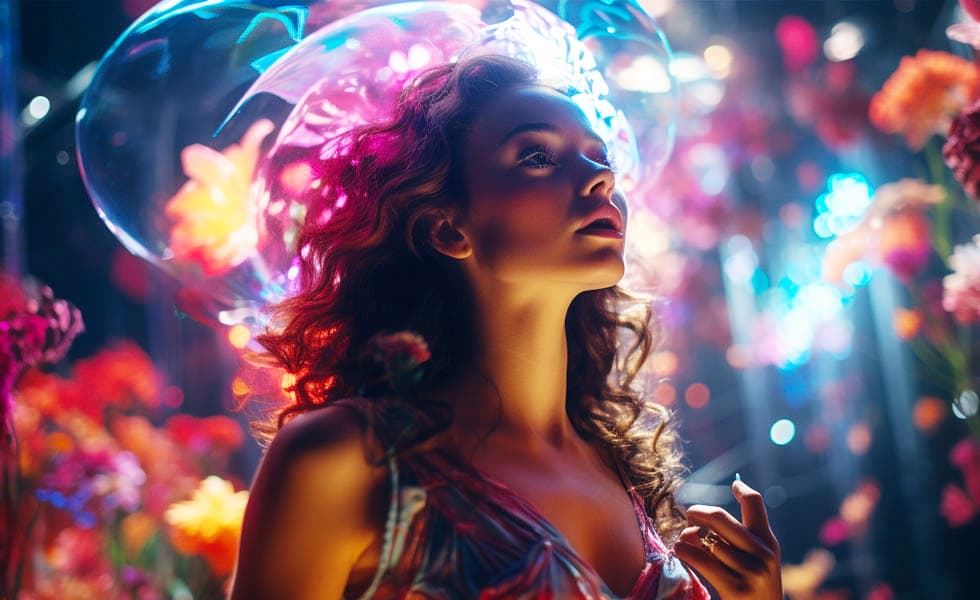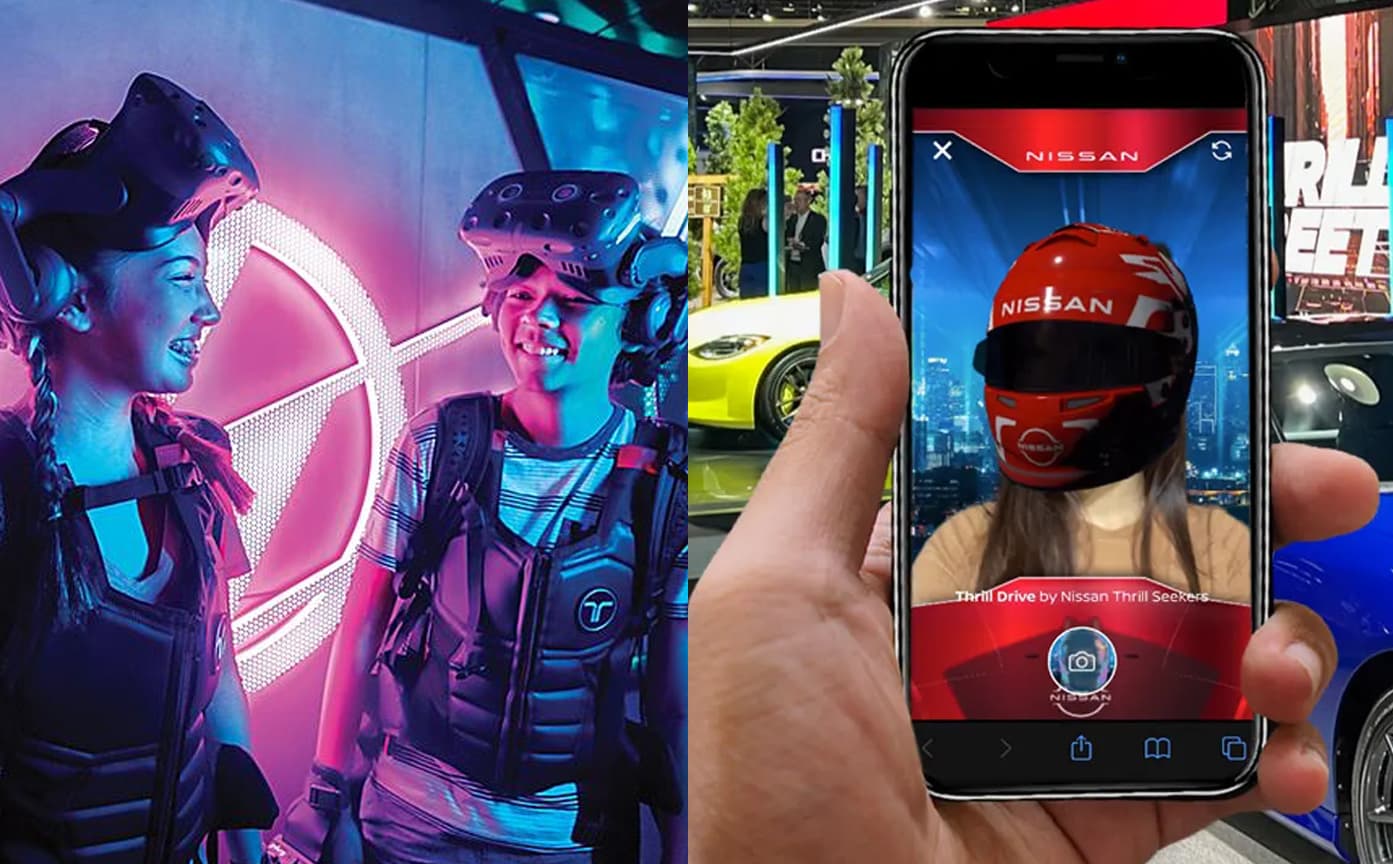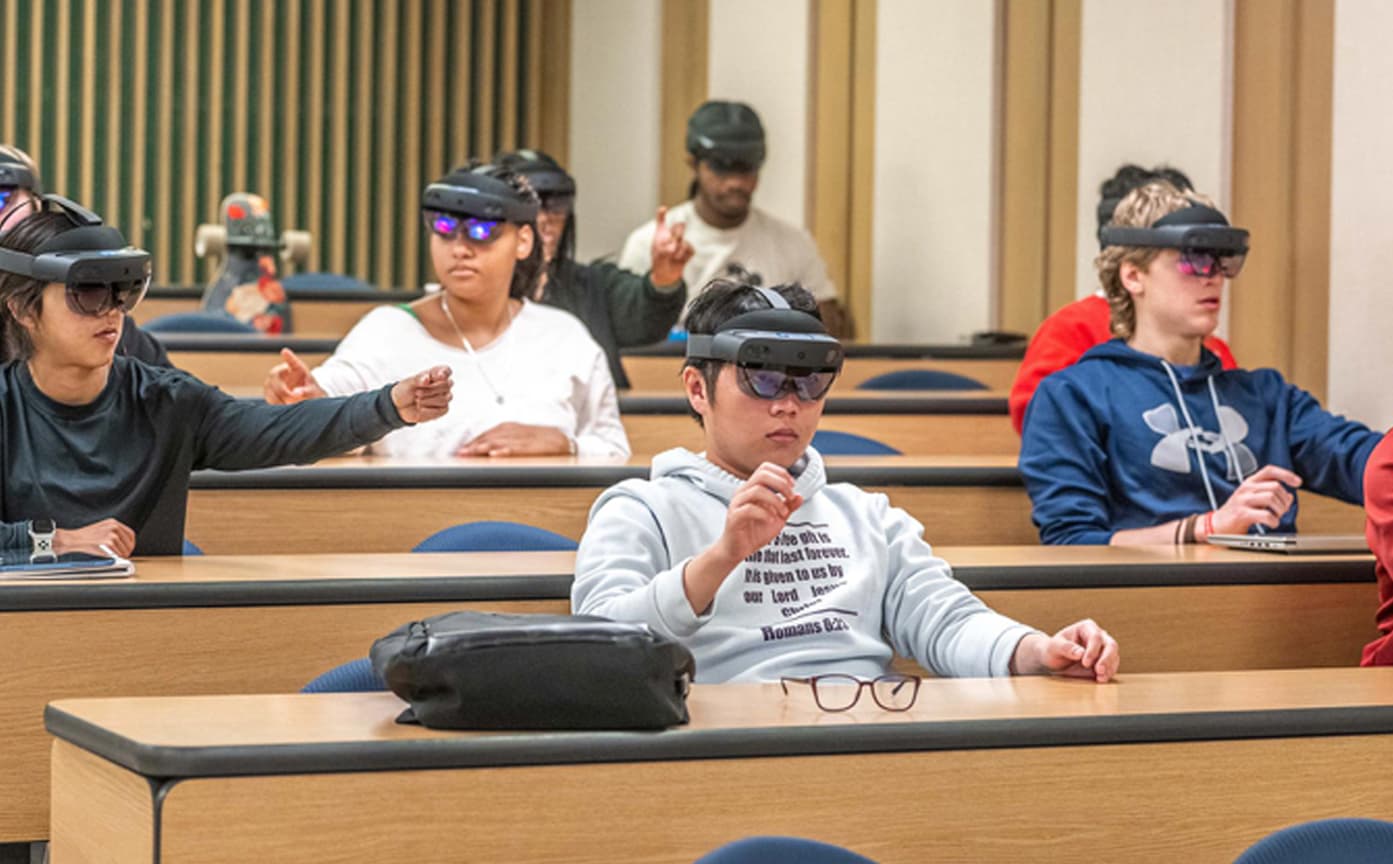
What are holograms? Holograms (or Holography) are based on the science of creating three-dimensional images using light and looking as if they are physically present. From its early beginnings in the 1940s to its modern-day applications in marketing, holography has continually evolved, captivating audiences with its ability to bring the virtual world to life. We are still far from what is depicted in Hollywood movies like the famous Princess Leia and R2D2 scene from Star Wars, but the concept is there.

Groove Jones is not talking about AR (Augmented Reality), which could be considered a hologram effect, or an HMD (Head Mounted Device) like a Magic Leap, Hololens, or Apple Vision Pro headset. We are talking about a visual effect you can see in real life as if it is in front of you. Holograms are often used to show something amazing and unbelievable. That attracts your attention – the magic and awe of something that draws an audience in. Today, marketers leverage holographic techniques like Pepper’s Ghost, Holoscrim projection, or hardware-implemented devices like Proto and Holofans to engage and entertain audiences. Groove Jones has extensive experience with holograms, 3d effects, and holographic techniques. We will share some of our insights in this article.
The Birth of Holography
The concept of holography was first introduced by Hungarian-British physicist Dennis Gabor in 1947. Gabor, who later won the Nobel Prize for Physics in 1971 for his invention, developed the idea while trying to improve the resolution of electron microscopes.

However, with the invention of the laser in the 1960s, holography took off, as the coherent light source was essential for creating transparent, stable holograms. But these were always small and simple executions. Today, marketers need ways to make a big wow effect that grabs today’s audience’s attention.
Types of Holograms and Holographic Techniques Available Today
Hologram – Pepper’s Ghost
One of the earliest and most famous holographic techniques is Pepper’s Ghost, named after John Henry Pepper, who popularized the illusion in the 19th century. This technique creates a ghostly image by reflecting a hidden object onto a piece of transparent material, such as glass or plexiglass, at an angle. The audience sees the reflected image of an object off-stage so that it appears to be in front of the audience. This makes the image appear as a hologram, interacting with the real environment or performers on stage.

This technique has been used in various settings, from haunted house attractions to the resurrection of deceased rapper Tupac Shakur at the 2012 Coachella Music Festival.

Audiences were stunned when a lifelike hologram of the late rapper Tupac Shakur appeared on stage, performing alongside living artists Snoop Dogg and Dr. Dre. This moment marked a significant milestone in using holographic technology in live performances and impacted the entertainment industry. Groove Jones co-founder Dale Carman was the technical and creative director behind the Simpsons’ Pepper’s Ghost effect, which was seen at Comic-Con 2014, where Matt Groening joined Homer Simpson on stage during a panel discussion.

The same effect is used in Disneyland’s Haunted Mansion ride, where ghosts appear at the dining hall table.

Recently, we used a Pepper’s Ghost effect for the production at the National Aviation Education Center (NAEC) in Dallas, TX. The technique allowed us to combine an actual physical model of the plane and its effects to make it look like it was flying in the Tuskegee Airmen exhibit. Link to case study – https://www.groovejones.com/tuskegee-airmen-peppers-ghost-hologram-exhibit/
Hologram – Holoscrim Projection
Holoscrim projection is a more modern holographic technique that uses a special type of screen material called holo scrim to create large-scale holographic displays. The holo scrim, a highly transparent and reflective material, is stretched across a frame, and images are projected onto it.

The result is a seemingly floating image that can be viewed from multiple angles. This technique has been used to create immersive experiences in concerts, product launches, and trade shows.

The Groove Jones team designed a 60-foot Holoscrim Hologram of Lil Nas X over Fisherman’s Wharf for Riot Games’ League of Legends LoL World event. Case study – https://www.groovejones.com/60-foot-tall-lil-nas-x-hologram-projection-for-league-of-legends-worlds-championship/
We also helped create the Holoscrim Hologram to launch the latest Avatar movie, The Way of the Water over Niagara Falls. The oversized holographic projection with the backdrop of Niagara Falls was used as part of a video promotion for the new trailer featuring James Cameron – Creator and Director of Avatar. The location was selected because James Cameron grew up in Niagara Falls. Case study – https://www.groovejones.com/holographic-projection-over-niagara-falls-for-disneys-avatar/
Another example of holograms projected onto a floating holo scrim or holo gauze material is the Luthansa Hologram we created. We hung an oversized physical 10-foot ring and projected an animation of the Lufthansa logo and images during an event.

Hologram – Proto Box Hologram
The Proto is a relatively new holographic display technology that uses a box-like structure with a transparent screen to project 3D images. The images appear to float inside the box, creating a captivating visual experience. This technique is often used in retail settings to showcase products uniquely and engagingly.

It can project a live camera feed, creating a volumetric “feel” when displayed in the box.

Note: the proto box effect only works vertically. If you want a wider, horizontal display, you can add multiple proto boxes to create a larger holographic effect.

The live camera feed is often off-stage and can be combined with a two-way camera system so the subject in the Proto box can engage with an audience. This can be combined with our Avateer™ system to allow an animated character controlled by an off-stage actor to engage with an audience. Similar to what we did for the St. Louis Aquarium Otter Chat experience. Case study – https://www.groovejones.com/otter-chat-an-interactive-animated-show-at-the-st-louis-aquarium/

Learn more about our Avateer™ CGI Real-Time Character System – https://www.groovejones.com/avateer-cgi-real-time-character-puppet-animation-system/
Hologram – Looking Glass Displays
Looking Glass Factory is a company at the forefront of holographic display technology, creating devices that allow viewing and interaction with 3D content through a holographic display. The screens use a lenticular lens system consisting of magnifying lenses that direct light in different directions. This allows multiple perspectives of a 3D object to be seen at once, creating a sense of depth and dimension. So, is this a hologram if it is on a display monitor? Well, it has depth and is considered a holographic display, so we include it here in this article.

These displays are not life-sized, but they do have a 65” display that is very impressive. Note: the more extensive display system only works horizontally. They have a smaller display, the Looking Glass Portrait, a smaller version of the larger display that works vertically. Below is an image from a Salesforce event we worked on that leveraged the smaller displays as accent pieces to highlight 3d elements. Case study – https://www.groovejones.com/web-3-0-avatar-fashion-show-at-salesforce-connections-event/

Hologram – Holofans, Hypervision, or LED Fans
Holofans are a type of holographic display that uses LED fan technology to create 3D images. The fan spins at high speed, and the LED lights on the blades create images that appear as floating holograms since the blades disappear when they spin. This technique is popular in advertising and promotional events due to its portability and ease of setup.

They can be placed together to create a wall effect. The user does not see the holographic objects as 3D objects in space—meaning they can not walk around them as they are flat images in the area. However, if animated, they appear as 3D objects in space.

Groove Jones has worked with Holofans in the past. Below is how we worked with Spirit Halloween to add an animated hologram effect to their in-store displays. Below is an animation of Jack Reaper as he peers down from above.

You will notice the Hypervision fans are enclosed in a glass case. This helps soften the noise that is generated by the spinning fans.

Are We There Yet?
The field of holography is rapidly evolving, and several emerging technologies are poised to shape the future of holographic displays. Producing a hologram involves various techniques, tricks, and just straight-up light and magic.
From its humble beginnings to its modern applications in marketing, holography has proven to be a powerful tool for creating engaging and entertaining experiences. As technology advances, we can expect to see even more innovative uses of holography in the future, further blurring the lines between the virtual and the real world. Holograms are not just powerful because of the technology or technique; they are powerful because of the content. You need a creative partner, which is when Groove Jones comes in.
Links to Hologram Marketing Experiences
Below are links to various marketing experiences created by Groove Jones that highlight different hologram techniques.








